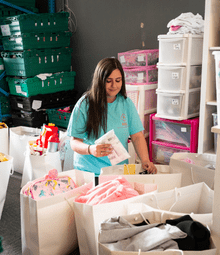Foraging is a fun and free way to try new foods by picking, plucking, and harvesting them from nature. It’s a great way to spend some time outside whilst getting to know your local area at the same time. There are lots of delicious plants in season this August, so grab a bag and get going!
Important rules of foraging
It’s important to make sure that where you forage is a public place, not privately owned. You’re allowed to forage in most public spaces, but it’s essential to check you’re not breaking any rules.
Only take the amount that you plan to eat and pick your plants with care, so you don’t damage the ecosystem. Remember to only take from places where there are lots of plants available and make sure to leave enough for the animals that live in the ecosystem.
Make sure that you recognise the plant you’re picking, and never eat anything you’re unsure of. Most of all – have fun and make a day of it!

Blackberries
You might have already picked wild blackberries before – they’re a great summer treat! You can find them on bramble bushes from July to September, which have thorns and small white flowers. The red ones aren’t ripe yet, and the best blackberries can be found up high and in direct light. They’re delicious raw or cooked.

Apples
Apple trees are usually found in private gardens, so try to find an abandoned or public orchard when you pick them or get permission from the owner first. They sometimes even grow on the side of roads or paths. Sweet apples can be enjoyed right away, but sour apples are great for cooking with.

Elderberries
Elderberries are a great late summer find. They grow on trees which are usually found in woodlands or hedgerows. The berries are small and a dark red colour, hanging in groups. They’re bitter uncooked so make sure you do something with them – like putting them in an elderberry and blackberry crumble.

Hazelnuts
Hazelnut tree leaves have round leaves with pointed tips and are a common find. The best time to harvest their nuts is late August when they’re unripe and green, but before squirrels eat them. Ripen them somewhere warm and dry then either eat them raw after removing the outer shell or roast them in the oven.

Mint
A delicious favourite that you can add to drinks or cooking, mint can be recognised by its fresh smell. Mint grows in low, open areas and has a squared stem and slightly hairy leaves. You can also freeze the mint leaves to use them later in the year – maybe for a wintery roast dinner.

There are lots of delicious plants which can be foraged in August. It’s a great way to try new foods for free and to get fresh ingredients perfect for summer cooking. Make sure you’re careful when you’re picking the plants but have fun and enjoy your natural foraged food!
For more eco-friendly living tips, climate updates and much more, follow us on social media @ForHousing.
















